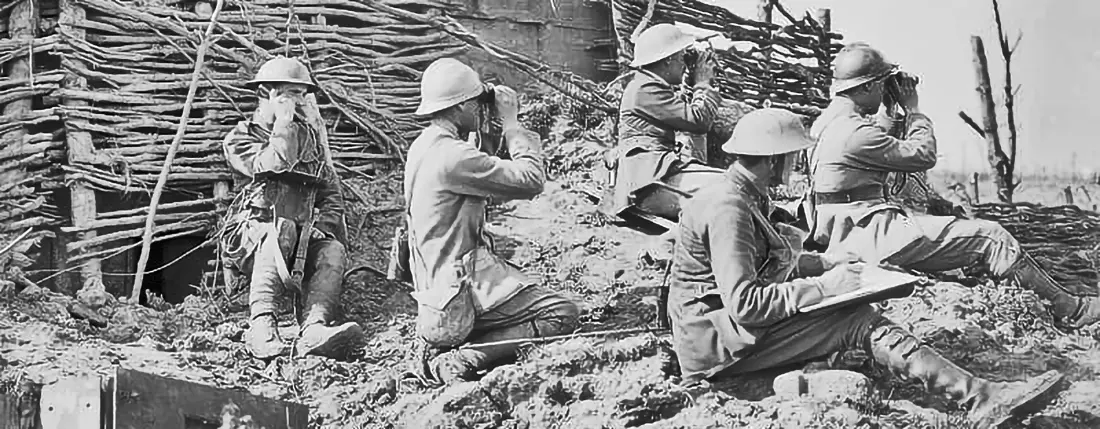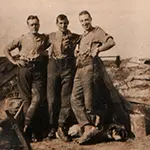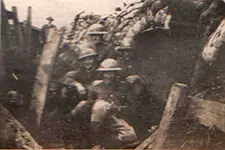Hill Top Farm, Ypres
During the 3rd Battle of Ypres, otherwise known as the Battle of Passchendaele from 31 July to 10 November 1917, Hill Top Farm was HQ for 1st South Midland Brigade RFA (T) along several several infantry units. It was also an artillery observation post.
Location
Hill Top Farm was roughly 2.5 miles NE of Ypres, about 1 mile north of St. Jean (now called Sint-Jan), about a mile NW of Wieltje.
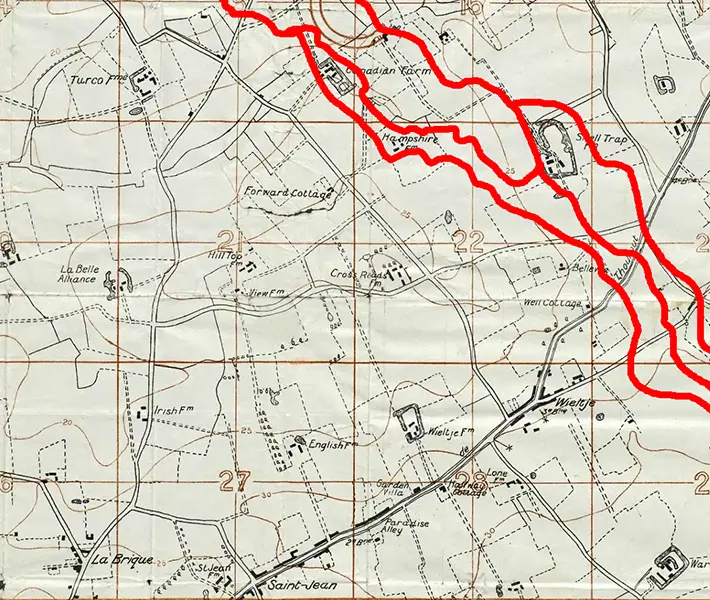
The area around Hill Top Farm, which is at the center of grid 21, overlaid with the German trench system of September 1917
Click for larger image of the map | Click for image of German trench system, September 1917
Image: Third Battle of Ypres - German trench lines (Sept 1917) (Wikimedia Commons)

Looking NE from Hill Top Farm, 1917
Image: Imperial War Museums
1st South Midland Brigade RFA (T)
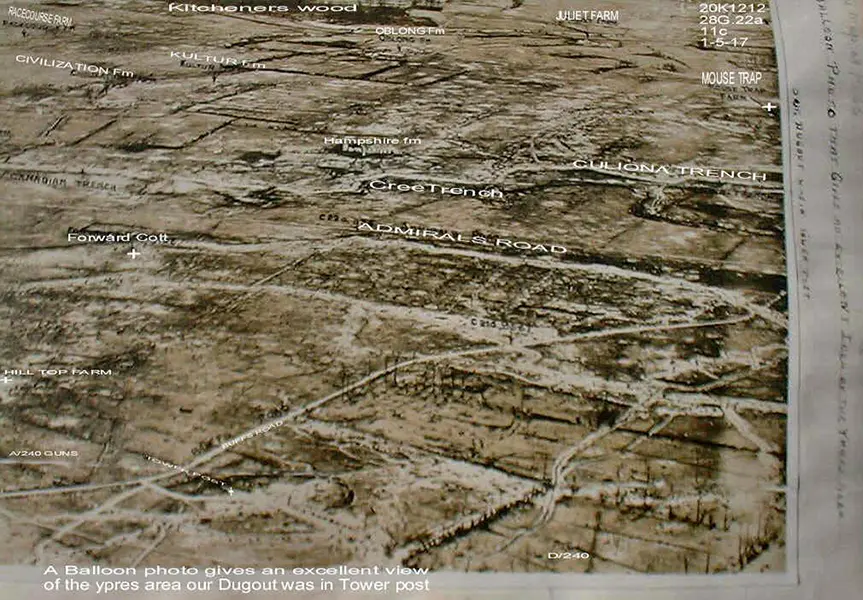
Balloon photo of the area north and east of Hill Top Farm
Notice 'A' Battery guns to the south of Hill Top Farm and the OP in Tower Post just to the east of them
Click for (slightly) larger photo
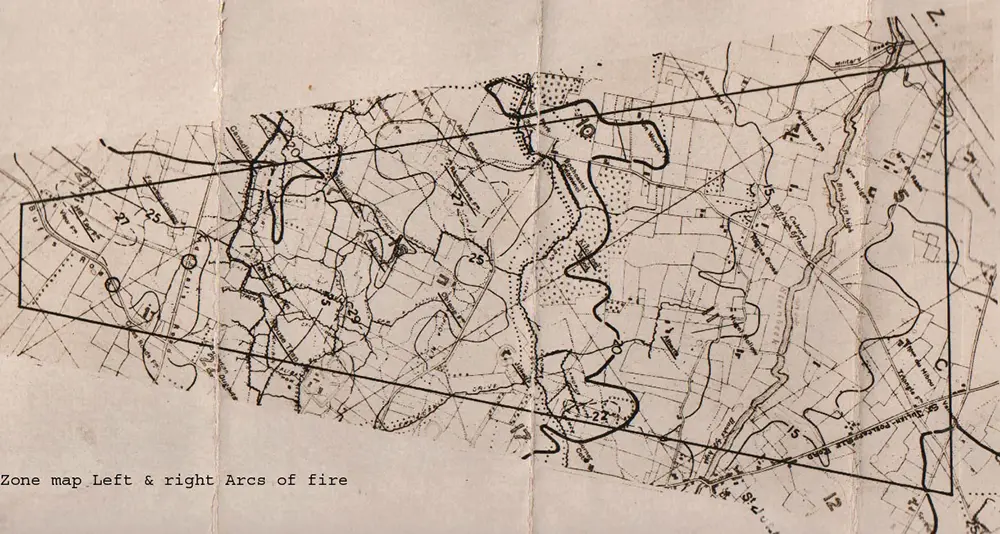
Fire zone from Hill Top Farm showing left and right arcs of fire
Photo: Printed by No 2 Advanced Section, Army Printing and Stationery Services (AP&SS)
Click for (slightly) larger photo
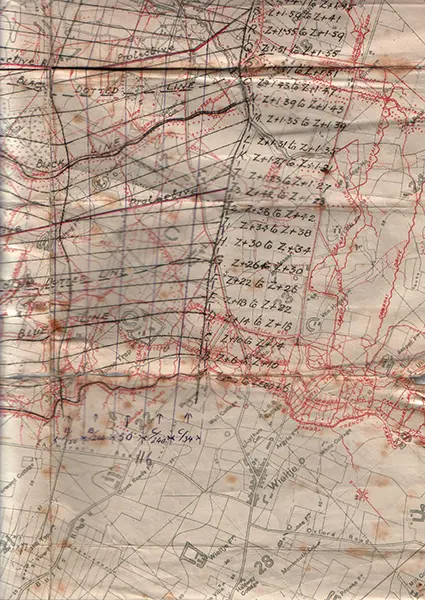
Barrage map dated 31 July 1917. The Barrage opened at 3.50 AM
Click for larger photo
Notes on the above barrage map:
Notice Hill Top Farm in the bottom right. The back of the original had a hand-written note in pencil, 'A' Bty 240 Bde, but 'A' & 'D' Bty's are not marked on the map. The gun positions marked are not accurate. From the brigade history it is clear that the guns of 'A' and 'B' Bty's were at Hill Top and that 'C' and 'D' were on the other side of Admirals road, with the wagon lines at Velamertinghe.
Click on the images below to open the gallery and full-sized images:
In April 1917, Captain F. S. Gedye M.C. wrote:
On the 28th [April 1917] the welcome news came that each battery would have a rest in the wagon lines beginning with 'A' battery, who would be off duty from dawn 29th, we packed up kits and bivvies and ordered horses to be at the crossroads about a mile back at 3pm.
At 2.30, just as the men were falling in, fresh orders came in saying that we were to be relieved by another Div artillery one section each night, on the 29th, 30th and 1st and that on the 2nd May we should march to the Doingt area where further orders would be issued.
The left section under Plowman went down last night and we are hoping to get both sections out tonight so as to have one day in the wagon lines before moving. Whether we are going 'Pushwards' or out to rest is not known.
And then in August 1917:
Casualties were very severe in all batteries.
Apart from the general heavy shelling of trenches, the Germans would put down what we called an area strafe, the ground was too congested for individual shelling of every target apparently, and for an hour or more, the German guns of every conceivable caliber would bombard an area of some 500/800 yards wide by a mile or more in depth and simply pound and pulverize the whole area. If your battery was not firing in an important shoot, the personnel was cleared to a flank where a forlorn group would watch it's home being battered, and later returned to patch up the wreckage.
Occasionally Hill Top Farm was our refuge, the only mined dugout in the area, and enormous affair of mined passages and with accommodation that housed our Bde H.Q., one or two Infantry H.Q. and quite a number of troops.
One outstanding strafe put up "D" battery's ammunition dump at one gun, and after an appalling roar with a sky literally blackened with earth, shells and cartridge cases, a large object came loping over slowly through the air to a spot about 300yards from the pit, said to be the gun platform. It landed with the thud of a small earthquake and turned out to be the gun itself, the wheels and carriage having been blown elsewhere. The crater where the ammunition had been was at least 25ft deep.

All quiet, Admiral's Road today
Sources and Resources
Header image: Imperial War Museums The Battle of Langemarck. British and French artillery forward observation officers, with British field telephonist, assist with the ranging in of the guns, 16th August 1917.
Derek Driscoll's original pages
1st South Midland Bde RFA (T) 1915-1917
4 Officers in a trench
Air Balloon photo looking north and east of Hill Top Farm
Arcs of Fire from Hill Top Farm
Barrage map
Brigade Maps
Gunners Sainsbury, Shapland and Clarke at Hill Top
Hill Top Shack
Photographs from the History of the 1st South Midland / 240 Bty RFA [T]
Other References
Battle of Passchendaele (Wikipedia)
Campaign and battle maps for the British Army, 1914-1918 (The Long, Long Trail)
Hill Top Farm (Imperial War Museums) - A collection of panoramic photos taken by the Royal Engineers from Hill Top Farm in 1917
Location of Hill Top Trenches Ypres (The Great War (1914-1918) Forum)
Passchendaele (Imperial War Museums) - A collection of photos of the 3rd Battle of Ypres (Passchendaele)
The Battles of Ypres, 1917 (Third Ypres) (The Long, Long Trail)
Third Battle of Ypres - German trench lines in September 1917 (Wikimedia Commons)
Villages East/North-east of Ypres (World War One Battlefields)
Ypres (Imperial War Museums) - A collection of photos of the battles for Ypres in WWI
Canadian Forces
The Canadians saw very heavy fighting at Ypres, occupying or crossing Hill Top Farm and Hill Top Ridge several times. These are some of their experiences:
1st Canadian Infantry Brigade in the Second Battle of Ypres - Canadian Military History, 2003, Volume 12, Issue 4
Mauser Ridge (The Great War (1914-1918) Forum) - This page contains some good maps
The Canadian Forces in the Great War 1914 - 1919 (Official History)
